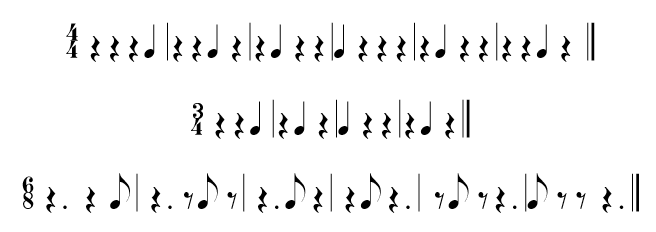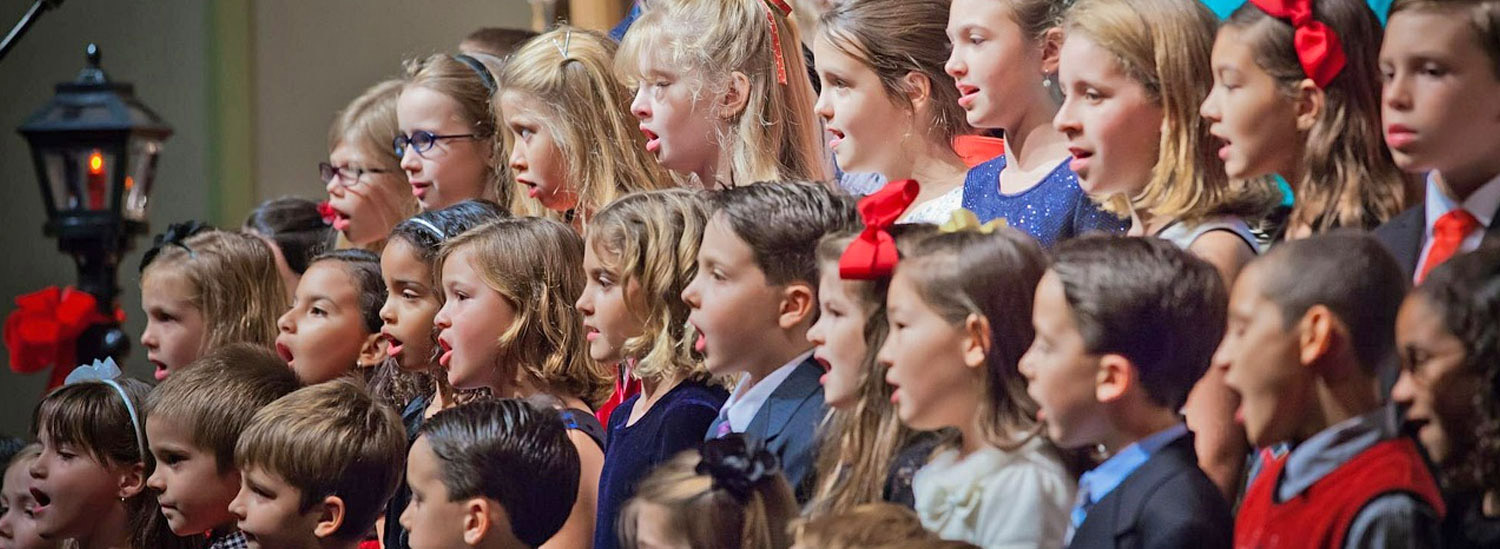Notes from a Music Classroom
Gathering activity
Thursday, Aug 3, 2018
Don’t you love it when you find a great idea that really works?
Or that you can borrow and build on?
I stumbled across such an idea in the form of a gathering activity (that I love!) on Choralnet.
It focuses student thinking on the steady beat. I love this activity because we can focus 🔍 our thinking but still have fun with and recognize the
organizational importance of the steady beat. My fourth graders loved it, too. We even added some variations of our own that we’ll
pass along to share:
Fix the meter in 4. The conductor conducts the pattern below.
- On the first measure clap 👏 on 1
- On the second measure clap 👏 on 2
- On the third measure clap 👏 on 3
- On the fourth measure clap 👏 on 4
- On the fifth measure clap 👏 on 3
- On the sixth measure clap 👏 on 2
- On the last measure clap 👏 on 1

Repeat multiple times while maintaining a perfectly steady beat. As the group gets better, increase the tempo🐇!
Credit where credit is due... find the original idea here: http://archive.choralnet.org/view/221892
Our Variations:
- Use a metronome instead of a conductor.
- Tap your foot quietly to keep the beat.
- Chant instead of clap (duration).
- Close your eyes and listen while you play or chant.
- Change to a different time signature, e.g.

Or if you prefer:

Start at the front of the measure instead of the back of the measure:

Or if you prefer:

Trade the sound for the silence:

Oh, the possibilities this activity has presented.
My students came in asking to play what we now call The Steady Beat Game. Can’t buy that!! 😎
Competence brings Confidence
Thursday, July 27, 2017
Sometimes it is fun to just play! This summer, I am playing in the pit orchestra for a local community theater production.🎭 Our group is a mixed bag of
amateur and professional musicians with a wide range of abilities with one important thing in common: we all just want to play. For me, it is
also an opportunity to observe. I can't help myself, I also love to watch people. Our two youngest players this time are both newly graduated from
high school. He plays bass.🎸 She plays trumpet.🎺 Both are enthusiastic to make pit playing a part of their life. Both have come from strong local
public school programs. Both played all through school. She was dedicated to one instrument. He plays many instruments. He does not sing.
She loves to sing. They both play well. I'm struck first by their energy.
They both come to rehearsal anxious to play. He gets busy right away noodling away on his instrument. He knows a million songs and wants to play them
all. She warms up by picking spots here and there to practice from her part. When we settle in to rehearsing the show, their differences become more
pronounced. She plays boldly (trumpet - right?). He is more reserved. I start to wonder why he, who when warming up, played so richly and confidently,
is suddenly holding back. Then I see it. He barely glances at the page, always watching the conductor. Her eyes jump back and forth between the page
and the conductor. Her written music is useful to her where his is not. He is relying primarily on his ear; a good skill to have
to be sure, but that alone isn't of use to him here.😟
He will go home and practice those parts he just can't find during rehearsal. She is working them out in rehearsal. I have
no doubt that our show will come together and both young players will do a great job. However, hands down, he is working harder and she is working
smarter.😎 My energy to return to my classroom and work those music reading skills is renewed. I want my students to be competent so that they can
always play with confidence!
Priorities Renewed
Saturday, July 15, 2017
Summer includes a chance to work with students from a variety of area schools at a local arts camp for which we put up a Junior show 🎭 in two weeks of rehearsal.
Our performers range in age from 7 to 12 years and they come with a variety of interests and talents. Like my school students, their level of interest
runs the gamut. One of my favorite parts of summer camp is the opportunity to work with my students in a more relaxed medium and to get to know
area teachers 👩🏼🏫 through their students.
We are about halfway through our production and as I have observed students working and playing hard, I am reminded once again that making
literacy a priority in my classroom is the right thing to do.👍🏾 The campers are a mixed bag of enthusiasm and they encourage each other through
their willingness to jump in and perform. However, the thing that stands out to me, perhaps because I am looking for it, is that the campers who:
- Are off book first
- Perform with the most confidence
- Rehearse with the most zeal
are also the strongest readers of both words and music. They are not necessarily the oldest of the group but
they are the ones for whom the printed page serves as a tool. They use their reading skills, both verbal and musical, to learn their lines
and their music and are able to get off book quickly and efficiently. That means they are into their rehearsals with hands free to act, sing, and
dance right away. And perhaps most importantly, they have confidence. When they return to their scripts and their
music pages, they look up what they need and get right back to rehearsing. They are reading their music as comfortably and naturally as
they are independently reading their scripts. They are successful in their craft.
With this affirmation, my thoughts can't help but turn to plans for the new school year. It will be here before we know it.
I find myself looking forward to once again sharing the gift of reading music with everyone I can reach. We are going to have so much fun!🎶
Welcome to the Kingdom of Music Literacy
Monday, June 19, 2017
This remarkable journey of teaching music has taken me to so many unexpected places!
For example, today I find myself blogging about teaching sight-singing for the purpose of introducing the
method book I have published to spread music literacy to as many people as I can reach.
It's funny... if you'd told me when I started teaching that I would be writing method books I would have
laughed and changed the subject. Yet, here we are.
My students had a need for quality materials to support sight-singing. Shockingly 😯, this wasn't their favorite activity!
I was at a loss to find what I needed. There are so many great ideas, books and methods out there - and I used many of them
when I taught middle school. None of them seemed to be exactly what I needed for my younger students.
I needed my younger students to be ready to read notes on the lines and spaces of the staff in time to play recorder in third grade.
I see them approximately 30 times per school year (once per week). I wanted needed a singing based
sight reading program. I searched and found many available, but none of them were specifically geared toward younger students.
Since I couldn't find what I needed for my classroom, I started writing. And since our teacher evaluation system recommends incentives,
I started shopping. I found these great little charms that I could give my students every time they tried to sight sing.
After three times, I noticed there were fewer complaints about the activity and more questions surrounding the
charms. "What color today?" "What do you mean we won't sight sing today?"
"When can I work on my next charm?" While the students were a little more focused on the charms than the music, I had certainly found a means to my end and avoided the cajoling.
So I planned my sight-singing lessons for once a month to get progressively harder and by the end of the year,
my students were reading at sight, simple pentatonic melodies. Goal met!
A good teacher also learns from her students. My original procedure for sight-singing involved more steps, but my method was forged and
refined in countless elementary classes with eager and often, highly opinionated students. 😏 Together, we got down to six reliable,
memorable, concise and essential steps that make up our procedure for sight-singing. The plan worked out so well that I pieced it
all together into a booklet for students to use. When I pieced the teacher plans together I realized I had something others might find
useful. My hope is that you and your students will find my program immediately useful and that your youngest students will feel more
inspired than intimidated to sing at sight. Let me know how it goes!







